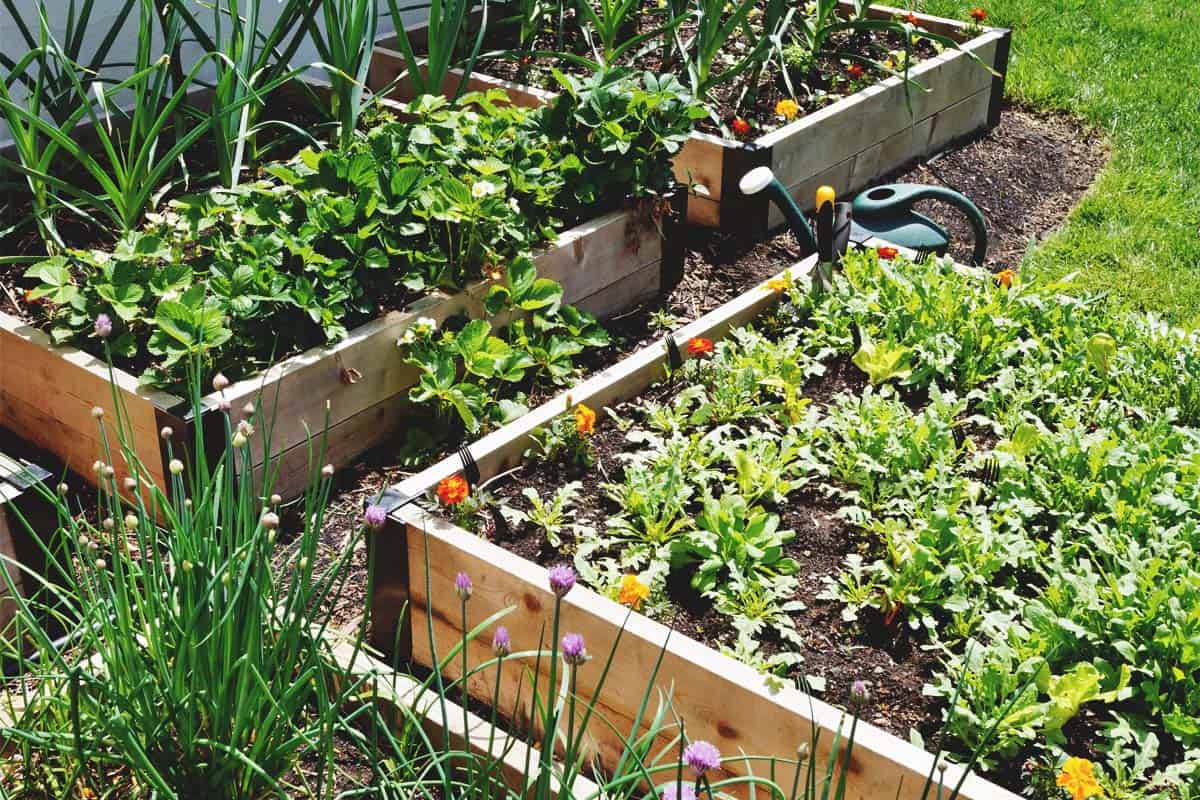To improve drainage in a garden bed, you can install drain tiles or perforated pipes that divert excess water away from the area and ensure proper drainage. Additionally, you can amend the soil with organic matter such as compost to improve its drainage capacity and prevent waterlogging.
:strip_icc()/streambed-echinacea-delphinium-d421f96f-d571a8448e224ce2807cf50cfcff0c50.jpg)
Credit: www.bhg.com
Assessing The Current Drainage Conditions
Assess the current drainage conditions in your garden bed to improve its efficiency. Conduct a soil percolation test to determine its ability to absorb water. Identify common drainage issues that may be causing water to pool or flow excessively. Look for signs of poor soil structure, compaction, or inadequate slope.
Address these issues by amending the soil, creating drainage channels, or adjusting the bed’s layout. Ensure that water is properly directed away from the garden bed to prevent waterlogging and root rot. By assessing and addressing drainage problems, you can promote a healthier garden bed and optimize plant growth.
So, take the time to evaluate your garden bed’s drainage and make the necessary improvements for optimal gardening success.
How to Improve Drainage in Garden Bed: Step by Step Guide
Preparing The Garden Bed For Better Drainage
Preparing the garden bed for better drainage is essential for healthy plant growth. Clearing debris and weeds is the first step, ensuring unobstructed water flow. Amending the soil with organic matter helps improve its structure and drainage capacity. By adding compost or aged manure, the soil becomes more porous, allowing excess water to drain away.
Creating slopes and swales in the garden bed is another effective method. This allows water to easily flow downhill and prevents puddles from forming. By strategically planning and shaping the land, you can divert water away from plants that are sensitive to excessive moisture.
Follow these steps to improve drainage in your garden bed and promote optimal plant health.
Implementing Drainage Solutions
Implementing drainage solutions in your garden bed can greatly improve its overall health and functionality. One effective method is installing french drains, which help redirect excess water away from the bed. Another option is building raised beds, which provide better drainage and prevent waterlogging.
Gravel trenches are also a useful solution, as they absorb and distribute water more evenly. These strategies ensure that water doesn’t accumulate and cause damage to your plants. By implementing these drainage solutions, you can maintain a healthy and vibrant garden bed.
Maintaining And Monitoring Drainage
Improving drainage in your garden is essential for maintaining healthy plants and preventing waterlogged soil. Regular inspections are key to identifying any drainage issues early on. Keep an eye out for signs of water pooling or excessive runoff. Managing water runoff can be done by redirecting it away from the garden bed using channels or swales.

Adjusting drainage solutions as needed is important because the needs of your garden may change over time. Consider installing french drains, adding more organic matter to improve soil structure, or using raised beds to enhance drainage. By paying attention to drainage and making necessary adjustments, you can create an optimal environment for your plants to thrive.
So, keep an eye on your garden’s drainage and take action to improve it when necessary.
Frequently Asked Questions On How To Improve Drainage In Garden Bed
How Can I Improve Drainage In My Garden Bed?
To improve drainage in your garden bed, you can:
– mix organic matter like compost into the soil to enhance its ability to drain. – raise the bed using a raised bed kit to ensure better drainage. – consider installing a drainage system, such as french drains, to divert excess water away from the bed.
Why Is Proper Drainage Important For Garden Beds?
Proper drainage is crucial for garden beds because it prevents waterlogging, which can lead to root rot and other plant diseases. Good drainage allows excess water to drain away effectively, ensuring that plants’ roots can access oxygen and nutrients easily.
How Do I Know If My Garden Bed Has Poor Drainage?
You can determine if your garden bed has poor drainage by observing these signs:
– puddles forming after rainfall that take a long time to disappear. – plants with wilted roots or yellowing leaves. – foul smell or stagnant water in the bed. – soil that feels constantly wet and sticky.
Can I Improve Garden Bed Drainage Without Digging?
Yes, you can improve garden bed drainage without digging by using raised beds or containers. These elevated options provide better drainage as they allow excess water to flow freely from the bottom, preventing waterlogging and ensuring healthy plant growth.
Can I Use Gravel To Improve Garden Bed Drainage?
Yes, using gravel can help improve garden bed drainage. Adding a layer of gravel or crushed stone at the bottom of the bed allows excess water to drain away quickly, preventing soil from becoming waterlogged. However, it’s essential to ensure proper layering and not overuse gravel, as it may impede drainage if used excessively.
Conclusion
Improving drainage in your garden bed is essential for maintaining healthy plants and preventing waterlogged roots. By following these tips, you can ensure effective drainage and create an optimal growing environment. Start by amending the soil with organic matter like compost or peat moss to increase its water-holding capacity while promoting drainage.
Consider adding a layer of gravel or rocks at the bottom of the garden bed to provide additional drainage and prevent water from accumulating. Adjusting the slope of the bed can also help water flow away from plants, reducing the risk of root rot.
It’s important to choose the right plants for your garden bed, opting for varieties that tolerate or thrive in moist conditions. Finally, regularly monitor and adjust your watering practices to avoid overwatering and promote healthy drainage. By implementing these simple steps, you can improve the drainage in your garden bed and create an environment in which your plants can thrive.

